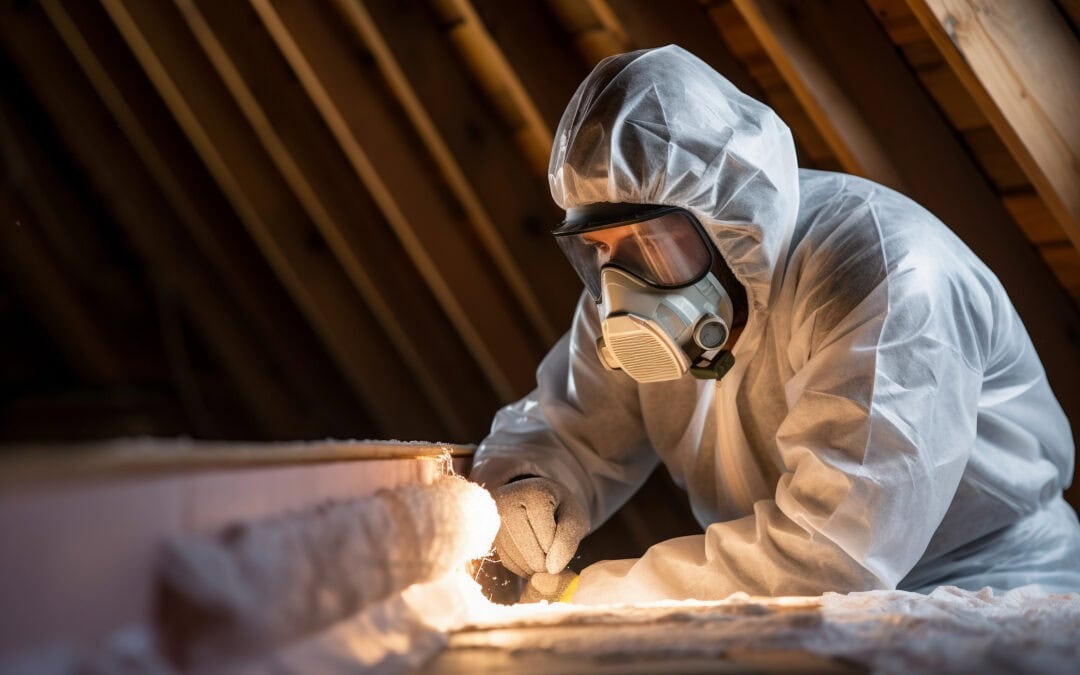Asbestlint: The Hidden Hazard of Airborne Asbestos Fibers
Asbestlint is a term that is becoming increasingly relevant in discussions about workplace safety, industrial hygiene, and residential health hazards. While asbestos itself has long been recognized as a dangerous material, the concept of Asbestlint refers specifically to the microscopic, airborne particles that contain asbestos fibers. These fibers, invisible to the naked eye, pose a unique and persistent risk, capable of lingering in the environment and causing severe long-term health issues.
We will explore the origins of Asbestlint, its health risks, common sources, identification methods, management strategies, legal implications, and alternatives available today. Whether you are a worker in industrial settings, a building manager, or a homeowner, understanding Asbestlint is essential for ensuring safety and preventing exposure.
What is Asbestlint?
Asbestlint is essentially airborne, lint-like particles containing asbestos fibers. Unlike solid asbestos sheets or insulation boards, these particles are extremely fine and lightweight, which allows them to become suspended in the air and travel throughout a building or facility.
The danger lies in their microscopic size and durability. When inhaled, these fibers can lodge deep within the lungs, where the body cannot remove them. Unlike ordinary dust, Asbestlint can remain in the environment for years, settle on surfaces, and even be carried home on clothing, exposing family members to secondary risks.
Understanding Asbestlint is critical because it represents a silent hazard—its presence often goes unnoticed until serious health problems develop.
Historical Context and Origins
Asbestlint originates from the handling, deterioration, or processing of asbestos-containing materials (ACMs). Historically, asbestos was a popular material in construction, shipbuilding, power generation, and manufacturing industries due to its fire-resistant, insulating, and corrosion-resistant properties.
Some of the most common applications included:
- Insulation: Pipes, boilers, and ducts often contained asbestos.
- Flooring and roofing: Vinyl tiles, shingles, and cement sheets.
- Ceiling and wall panels: Acoustic tiles and wallboards.
- Industrial machinery: Heat-resistant components and gaskets.
- Shipbuilding and power plants: Extensive use for insulation and fireproofing.
Over time, these materials degrade naturally or become damaged during renovations or maintenance. When this happens, asbestos fibers are released into the air, forming Asbestlint. Unlike larger chunks, these microscopic fibers can float, increasing the risk of inhalation.
Health Risks of Asbestlint Exposure
The health risks associated with Asbestlint are severe and often long-term. Even small amounts of exposure can lead to life-threatening diseases. The primary health concerns include:
Asbestosis
A chronic lung disease characterized by scarring of lung tissue. Over time, lung function deteriorates, making breathing difficult. Symptoms include persistent coughing, fatigue, and shortness of breath.
Mesothelioma
A rare but aggressive cancer affecting the lining of the lungs, heart, or abdomen. Mesothelioma has a long latency period, often developing 20–50 years after exposure, making early diagnosis extremely difficult.
Lung Cancer
Exposure to Asbestlint significantly increases the risk of lung cancer, especially for smokers. Inhaled fibers can cause mutations in lung cells, eventually leading to malignant growths.
Pleural Disorders
Conditions like pleural thickening, plaques, or effusion can develop after prolonged exposure. These disorders affect lung function and can cause chest pain and respiratory distress.
Secondary Exposure Risks
Even individuals not directly working with asbestos may be exposed through contaminated clothing, tools, or household dust. Family members of industrial workers have been known to develop asbestos-related diseases, highlighting the importance of controlling contamination at the source.
Common Sources of Asbestlint
Asbestlint can be found in both industrial and residential environments. Some of the most common sources include:
- Industrial Settings: Factories, power plants, shipyards, and manufacturing facilities.
- Older Buildings: Homes, offices, and public buildings built before the 1980s.
- Renovations and Demolition: Disturbing asbestos-containing materials releases fibers into the air.
- HVAC Systems: Air ducts can carry asbestos fibers from one area to another.
- Roofing and Flooring Materials: Shingles, tiles, and cement sheets that deteriorate over time.
Identifying these sources is crucial to preventing exposure and implementing protective measures.
Identifying Asbestlint
Detecting Asbestlint is challenging because it resembles ordinary dust. However, some indicators suggest its presence:
- Buildings constructed before 1980 are more likely to contain asbestos materials.
- Unusual dust accumulation, particularly grayish-white, fibrous dust.
- Aging or deteriorating insulation, ceiling tiles, and floorboards.
- Symptoms among occupants, such as persistent coughing, wheezing, or difficulty breathing.
Professional Detection Methods:
- Air Sampling: Collecting airborne fibers for laboratory analysis.
- Polarized Light Microscopy (PLM): Examining bulk samples for asbestos content.
- Transmission Electron Microscopy (TEM): Identifying extremely small fibers with high sensitivity.
DIY testing is unreliable and dangerous, so professional assessment is strongly recommended.
Managing and Removing Asbestlint
Managing Asbestlint requires professional expertise and strict safety protocols. Key steps include:
Asbestos Survey and Risk Assessment
Certified inspectors evaluate the presence and concentration of asbestos fibers in a building, identifying high-risk areas.
Containment
Areas suspected of Asbestlint contamination are sealed off using plastic sheeting, negative air pressure systems, and restricted access to prevent fiber spread.
Personal Protective Equipment (PPE)
Workers handling asbestos use full-face respirators, disposable coveralls, gloves, and eye protection. Proper fit-testing and maintenance of PPE are mandatory.
Safe Removal
Wet cleaning methods and HEPA-filtered vacuums prevent fibers from becoming airborne during removal. Dry sweeping is strictly prohibited.
Disposal
All asbestos waste is double-bagged, labeled, and transported to licensed disposal facilities. Documentation is essential for regulatory compliance.
Preventing Asbestlint Exposure
Prevention is the most effective strategy to protect workers and occupants:
- Conduct regular inspections of older buildings and industrial sites.
- Train employees on asbestos awareness and proper handling.
- Seal or encapsulate intact asbestos materials instead of removing them unnecessarily.
- Install HEPA air filtration systems in areas at risk.
- Follow government regulations and maintain detailed records of inspections, work permits, and remediation efforts.
Legal Implications and Compensation
Asbestos exposure carries legal ramifications. Employers are legally required to ensure safe work environments. Failure to comply with safety regulations can lead to lawsuits and compensation claims.
Victims may be entitled to:
- Medical expenses reimbursement
- Lost wages
- Pain and suffering compensation
Documenting exposure history is critical for establishing liability, and seeking legal guidance from specialized attorneys can help navigate the complex process of filing claims.
Alternatives to Asbestos
Today, safer alternatives exist for almost every asbestos application:
- Fiberglass: Durable, fire-resistant, and safe for insulation.
- Mineral Wool / Rock Wool: Excellent thermal performance and soundproofing.
- Cellulose Insulation: Eco-friendly and thermally efficient.
- Natural Materials: Cork, hemp, and other sustainable alternatives.
Adopting these alternatives eliminates health risks while providing comparable performance.
Future Outlook and Technological Advances
Technological advancements are improving asbestos detection and remediation:
- Nanotechnology filters and air monitoring systems can detect even minuscule fiber levels.
- Robotic remediation reduces human exposure during dangerous removal tasks.
- Research into biological methods for breaking down asbestos fibers is ongoing.
Despite progress, legacy asbestos in older buildings and industrial sites remains a persistent risk, highlighting the need for ongoing vigilance.
Common Myths About Asbestlint
- “A little asbestos won’t hurt.” No exposure is considered safe.
- “All asbestos should be removed immediately.” Encapsulation may be safer than removal if materials are intact.
- “Standard dust masks are enough.” Only specialized respirators with HEPA filters provide adequate protection.
Correcting these myths is vital for workplace and household safety.
FAQs About Asbestlint
What is Asbestlint?
Airborne, lint-like particles containing asbestos fibers that are released when asbestos-containing materials deteriorate or are disturbed.
Why is Asbestlint dangerous?
The microscopic fibers can lodge in the lungs, causing asbestosis, mesothelioma, lung cancer, and other respiratory diseases.
Where can Asbestlint be found?
Older insulation, flooring, ceiling tiles, roofing materials, industrial plants, and shipyards.
Can I clean up Asbestlint myself?
No. Only certified professionals should handle asbestos removal and containment.
Is there a safe level of exposure?
No. Even minimal exposure can be harmful over time.
Conclusion
Asbestlint represents a hidden but serious hazard in both industrial and residential environments. Its microscopic, airborne fibers can cause severe long-term health problems, making awareness, prevention, and professional management essential.
Understanding the sources, identifying potential contamination, implementing strict safety protocols, and utilizing modern asbestos alternatives are crucial steps in mitigating risks. By prioritizing education, vigilance, and proper handling, industries and homeowners can protect themselves and their communities from the long-lasting dangers of Asbestlint.
Safety, awareness, and proactive management are not just precautions—they are life-saving measures in the battle against this invisible threat.






